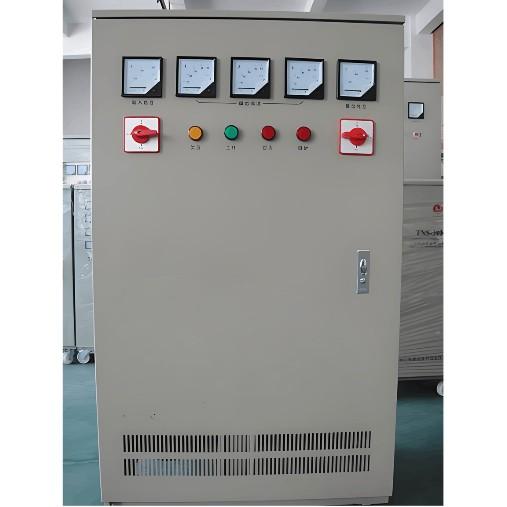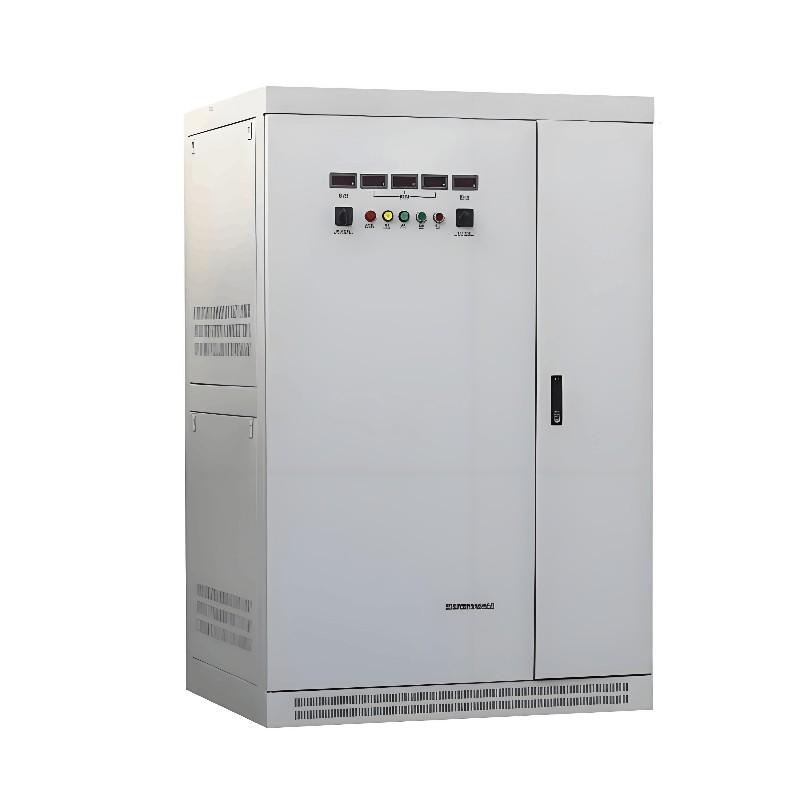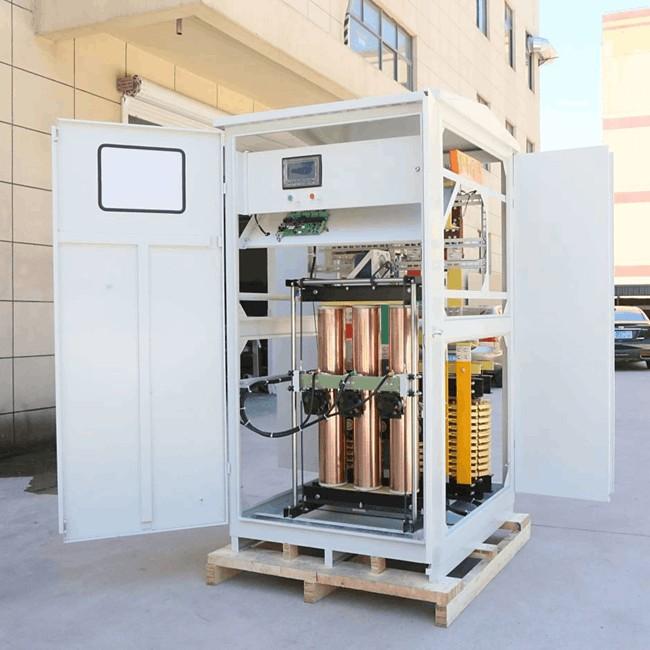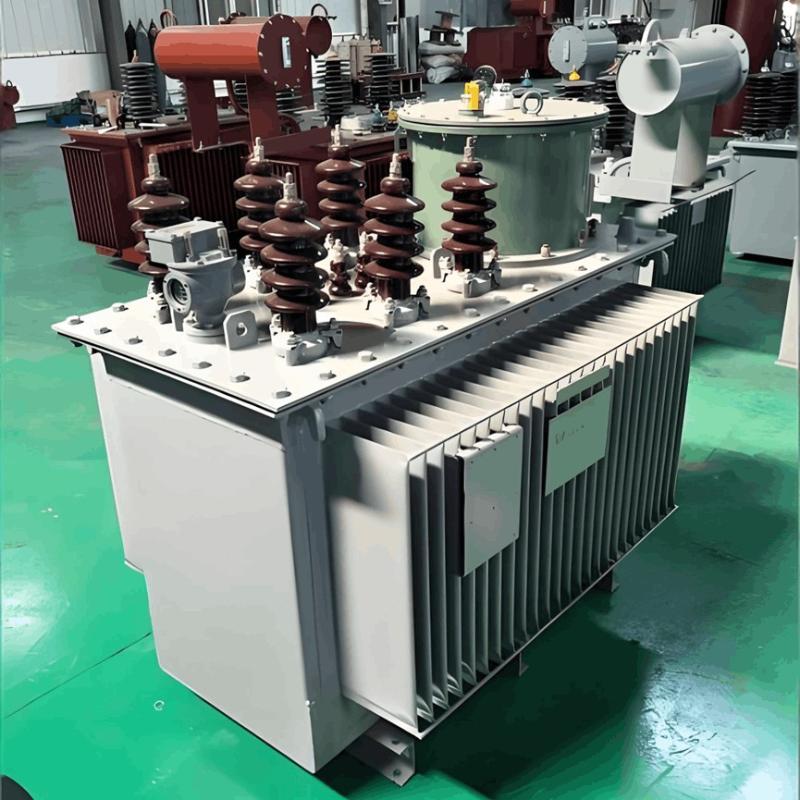Managing “low voltage” is a core goal for power enterprises to serve electricity customers. After large - scale construction and renovation of rural power grids, the 10 kV and low - voltage lines have been significantly improved. However, due to limited funds, the power supply distance in some remote areas is too long, making it difficult to ensure the voltage at the end of the lines. With economic development, customers’ requirements for power quality are increasing. Strict standards are being promoted and implemented. The comprehensive management of power quality has become a shared responsibility of society and enterprises, and the supporting role of high - quality electricity for the economy will be further strengthened. The SVR feeder automatic voltage regulation device effectively solves the “low voltage” problem of the power grid.
1 Line Status
The 10 kV Sansheng Line of a regional central power supply station is responsible for supplying electricity to 6 villages, 40 villages (tuns), and 4004 households in a certain township; the line length is 49.5321 km, and the conductors use LGJ - 70, LGJ - 50, and LGJ - 35 types; the total capacity of distribution transformers is 7343 kVA (58 units/2353 kVA managed by the bureau, 66 units/5040 kVA self - maintained), with 832 towers; 150 kvar and 300 kvar capacitors are installed on No. 9 and No. 26 poles of the branch lines respectively; the high - voltage line loss is 16.43%, and the annual electricity consumption is 5.33 GWh; the length from the Sansheng Line to the branch line is 15.219 km, and 13 transformer areas exceed the power supply radius (with a capacity of 800 kVA). During peak power consumption, the voltage on the 220 V side of the distribution transformer drops to 136 V.
2 Solutions
To ensure voltage quality, the main voltage regulation methods and measures for medium - and low - voltage distribution networks are as follows: build a 66 kV substation to shorten the 10 kV power supply radius; renovate the 10 kV Sansheng Line to increase the conductor cross - section and reduce the line load rate; install an SVR feeder automatic voltage regulation device.
2.1 Plan for Building a 66 kV Substation
The production and domestic electricity consumption in a certain township in a certain region mainly relies on the 10 kV outgoing lines of the 66 kV Misha Substation. Due to the over - extended 10 kV lines, the power supply radius reaches 18.35 km. This plan proposes to build a 66 kV substation in a certain place. The main transformer capacity is selected as 2×5000 kVA, and 1 unit will be put into operation in the current phase.
Estimated Funds: 8.9 million yuan
Expected Effect Analysis: Building a new substation can shorten the power supply radius, increase the voltage at the end of long lines, and improve power supply quality. It is a relatively optimal solution to solve the problem of low voltage. After the transformation, the power supply radius of the 10 kV Sansheng Line will be shortened from 18.35 km to 9.4 km; the 10 kV terminal voltage is expected to be adjusted from 8.09 kV to 10.5 kV, and the 0.4 kV voltage can be adjusted from 0.236 kV to 0.38 kV. Although this plan can effectively solve the voltage problem, the investment is relatively high.
2.2 Plan for Expanding the 10 kV Sansheng Line
Carry out an expansion of 12.5 km on the main line of the 10 kV Sansheng Line, replace the original LGJ - 70 type conductors with LGJ - 150 type high - voltage insulated wires, and add 58 12 - meter reinforced concrete poles.
Estimated Funds: 2.3 million yuan
Expected Effect Analysis: Increasing the conductor cross - section to optimize line parameters can reduce the proportion of the resistance component in voltage loss for lines with scattered customers and small conductor cross - sections, thereby playing a voltage regulation role. After the transformation, the 10 kV terminal voltage can be adjusted from 8.09 kV to 9.9 kV, and the 0.4 kV voltage can be adjusted from 0.236 kV to 0.35 kV.
2.3 Plan for Installing an SVR Feeder Automatic Voltage Regulator
Install one 10 kV automatic voltage regulator in the mode of a box - type substation at pole No. 141 of the 10 kV Sansheng Line to solve the "low voltage" problem of the line at the rear of pole No. 141.
Estimated Funds: 0.45 million yuan
Expected Effect Analysis: After the transformation, the 10 kV terminal voltage can be adjusted from 8.09 kV to 10.8 kV, and the 0.4 kV voltage can be adjusted from 0.236 kV to 0.37 kV.
The comparison of the above three voltage regulation methods is shown in Table 1, and the comparison of voltage improvement effects and investments is shown in Figures 1 and 2. Through analysis, the SVR feeder automatic voltage regulation complete set of equipment is easy to install, technically feasible, and economically practical, adapts to the characteristics of rural power grid power supply, and meets the requirements of rural power grid transformation. This device stabilizes the output voltage by adjusting the turns ratio of the three - phase autotransformer and has significant advantages: it supports fully automatic on - load voltage regulation; it uses a star - connected three - phase autotransformer, which has a large capacity and a small volume and can be erected between two poles (S≤2000 kVA); the voltage regulation range reaches 20%, which can fully meet the voltage regulation requirements.


Based on theoretical calculations, since the capacity behind Pole 141 is 2300 kVA, and considering an appropriate margin, it is decided to install an SVR feeder automatic voltage regulator with the model SVR - 3000/10 - 7 (0~+20%) in front of the T - node of Pole 141 on the main line. After installing the SVR feeder automatic voltage regulator, the voltage at Pole 56 of the branch line can reach about 10.15 kV, and the voltage at the end of the line can reach about 10 kV.
3 Operation Effect
In March 2011, with the completion of the installation and commissioning of the 10 kV SVR feeder automatic voltage regulation complete set of equipment on the 10 kV Sansheng Line, in the subsequent months, a certain Co., Ltd. regularly and irregularly monitored the voltage in this area. The three - phase voltage fluctuated around 370 V, and the single - phase voltage fluctuated around 215 V. Practice has proved that the function and performance of the SVR feeder automatic voltage regulation complete set of equipment, which automatically tracks changes in the input voltage to ensure a constant output voltage, are very stable, and it has achieved remarkable results in low - voltage governance.
4 Benefit Analysis
4.1 Social Benefits
The 10 kV distribution network in a certain city features long lines, wide - spread load distribution, and numerous branch lines. The electricity load varies significantly with day - night cycles and seasons. Installing automatic voltage regulators at the mid - point or the two - thirds point of the line can ensure the voltage quality of the entire line. For heavily - loaded lines, where large loads cause significant voltage drops, installing automatic voltage regulators on the lines can also well improve the line voltage quality and ensure that the user - side voltage meets the standards.
4.2 Economic Benefits
The distance from the installation point to the end of the line is approximately 9.646 km. The transmission line uses LGJ - 70 type conductors, with a line resistance of 4.42 Ω. The voltage at the installation point is 8.67 kV, and it changes to 10.8 kV after voltage regulation. The total annual electricity savings of the equipment is 182,646 kWh. Calculated at 0.55 yuan/kWh, the annual direct economic benefit of a single device is about 100,400 yuan.
Using an SVR voltage regulator for this line saves a large amount of funds compared to building a new substation or replacing conductors. Not only has the line voltage been greatly increased to meet relevant national regulations, resulting in good social benefits, but when the line load remains unchanged, increasing the line voltage reduces the line current, to a certain extent reducing line losses and generating certain economic benefits. In the future, the company will also use automatic voltage regulation complete sets of equipment in combination with automatic reactive power compensation devices on this basis, aiming to minimize loss reduction and energy conservation and improve the company's economic benefits.
5 Conclusion
For areas with limited load development potential, especially in rural power grids with light loads and long lines, using SVR feeder automatic voltage regulation complete sets of equipment can postpone the construction of new 66 kV substations. Its investment is less than one - tenth of that for building a substation. It not only effectively addresses the “low voltage” issue, reduces losses and saves energy, and achieves significant social and corporate economic benefits, but also saves a large amount of capital investment. It is worthy of reference and promotion.























